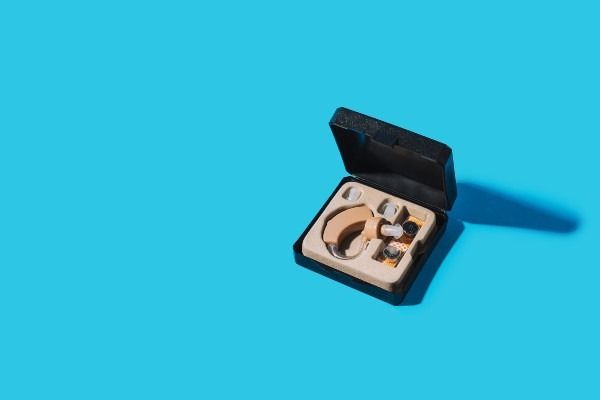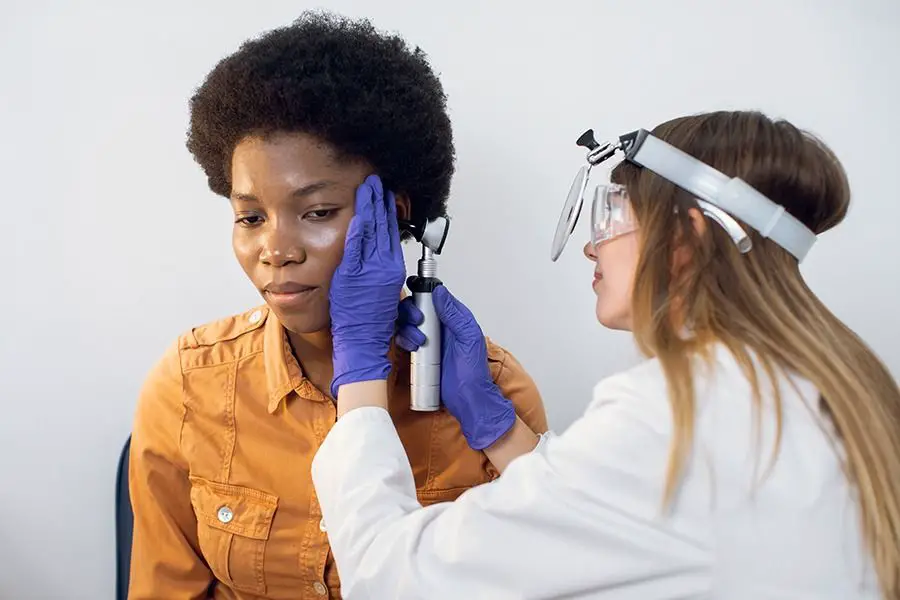Introduction
Navigating the world of sensorineural hearing loss can be a complex journey, filled with scientific jargon, medical terminologies, and a deluge of information that could be overwhelming. We understand the challenges that come with comprehending such a nuanced medical condition and the critical need for clear, accurate, and empathetic information. This blog post is tailored to speak directly to adults experiencing sensorineural hearing loss, taking them by the hand to guide them through this labyrinth of information.
Understanding sensorineural hearing loss goes beyond just a clinical or scientific perspective; it also requires an empathetic viewpoint. We recognize that behind every discussion on symptoms, diagnosis, or treatment options, there is an individual grappling with the reality of hearing loss, adapting to new ways of perceiving sound, and navigating changes in their interactions with the world.
We will delve into the causes and symptoms of sensorineural hearing loss, helping you to identify and understand the signs that characterize this condition. We will explore the role of genetics, revealing how hereditary factors can influence the likelihood of developing sensorineural hearing loss. By demystifying complex processes like audiograms and modern diagnosis techniques, we aim to help you become an active participant in your care and a better advocate for your health.
To fully appreciate the scope of sensorineural hearing loss, we will also delve into the fascinating anatomy of the ear and its inner workings. This detailed understanding will empower you to visualize the journey of sound from your environment to your brain, providing a foundation for understanding where and how sensorineural hearing loss occurs.
Throughout this journey, our approach is one of empathy and respect. We appreciate the strength it takes to adapt to sensorineural hearing loss and the courage to seek out knowledge and resources. We are here with you, step by step, as you venture into understanding your sensorineural hearing loss. Our hope is that this post provides not just information, but also a measure of comfort and a reaffirmation of the resilience and adaptability of the human spirit.
Understanding Sensorineural Hearing Loss Causes and Symptoms
Sensorineural hearing loss is primarily caused by damage to the inner ear or the nerve pathways from the inner ear to the brain. Various factors can result in this damage, including aging, exposure to loud noise, certain medications, illnesses, genetic syndromes, or even a head trauma. In many cases, it’s a combination of several factors that leads to the loss of hearing.
The symptoms of sensorineural hearing loss are often subtle at first. You might find it challenging to follow conversations in a noisy environment or perceive a constant ringing sound in your ears, known as tinnitus. Many people also experience a gradual decline in the ability to hear high-pitched sounds or a change in the quality of sounds. Recognizing these symptoms is the first step toward seeking help and understanding your personal journey with sensorineural hearing loss.
OTC Hearing Aid Pair
Experience the world like never before with the RCA OTC Behind-the-Ear Hearing Aid. Our advanced digital technology ensures that every sound is crystal clear and vibrant, allowing you to fully immerse yourself in life’s experiences. Whether it’s the laughter of loved ones or the music that moves you, our hearing aid brings back the joy of every moment.
Say goodbye to the hassle of appointments and prescriptions. The RCA OTC Hearing Aid is designed to meet the needs of individuals without the need for a prescription. With its seamless setup and user-friendly design, you can effortlessly enhance your hearing abilities and stay connected to the world around you. Simply unpack, wear, and enjoy improved auditory perception instantly.
Experience optimal comfort and style with our discreet behind-the-ear design. The thin tube design allows you to wear glasses comfortably, so you can enjoy clear hearing while maintaining your personal sense of style. Plus, our rechargeable battery ensures long-lasting power, eliminating the inconvenience of constantly replacing small batteries. Elevate your hearing experience with the RCA OTC Hearing Aid and embrace the world with confidence.
The Genetics of Sensorineural Hearing Loss
Genetics plays a critical role in many instances of sensorineural hearing loss. Specific genes play a crucial part in the development and functioning of the auditory system. Mutations in these genes can cause the auditory system to develop or function improperly, leading to hearing loss.
There’s a multitude of genes implicated in sensorineural hearing loss, and research is ongoing to identify and understand them all. Several genetic syndromes that include sensorineural hearing loss are now recognized, including Usher syndrome, Pendred syndrome, and Waardenburg syndrome. Understanding the genetics of sensorineural hearing loss can help individuals and families grasp the cause of their hearing loss and provide valuable information for future family planning.
Deafness: A Journey of Challenges and Triumphs
Decoding Sensorineural Hearing Loss Audiograms Explained
When it comes to diagnosing sensorineural hearing loss, one tool that doctors often rely on is an audiogram. An audiogram is a visual representation of a person’s hearing ability. It measures the softest sounds you can hear at various frequencies or pitches. It’s usually presented as a graph with frequency represented on the horizontal axis and loudness on the vertical axis.
An audiogram can help identify both the type and degree of hearing loss. In sensorineural hearing loss, the pattern typically shows a significant reduction in hearing sensitivity to higher frequencies. While the audiogram might seem intimidating initially, understanding it can be an empowering step in managing your hearing loss.
Modern Diagnosis Techniques for Sensorineural Hearing Loss
Beyond the audiogram, several other modern techniques are being used to diagnose sensorineural hearing loss. One such method is Otoacoustic Emissions (OAEs) testing, which assesses the function of the outer hair cells in the cochlea. Another is Auditory Brainstem Response (ABR) testing, which measures the electrical activity of the auditory nerve and brainstem.
In some cases, imaging techniques like MRI or CT scans may be used to visualize the structures of the inner ear and auditory pathway. Genetic testing is also becoming more common, especially in cases of congenital or early-onset sensorineural hearing loss. With these advanced techniques, doctors can offer a more accurate diagnosis, allowing for targeted and personalized treatment plans.
11 ways to improve sleep better with tinnitus
The Anatomy of the Ear Inner Workings and Sensorineural Hearing Loss
Understanding the anatomy of the ear is instrumental to comprehend how sensorineural hearing loss occurs. The ear is a complex organ, divided into three parts: the outer ear, the middle ear, and the inner ear. Sound waves travel through the outer ear, vibrate the eardrum in the middle ear, and finally, reach the inner ear where they are transformed into electrical signals for the brain to interpret.
Within the inner ear lies the cochlea, a spiral-shaped structure filled with tiny hair cells. These hair cells move with the vibrations and convert them into electrical signals. With sensorineural hearing loss, these hair cells or the nerve pathways to the brain are damaged or defective, impairing the transmission of sound signals to the brain.
Conclusion
In this compassionate exploration of sensorineural hearing loss, we’ve journeyed through the causes, symptoms, and the genetic factors that may contribute to the condition. We’ve decoded audiograms and outlined modern diagnosis techniques, shedding light on the processes doctors use to determine the type and extent of hearing loss. Through an understanding of the intricate anatomy of the ear, we’ve seen how inner ear or nerve damage can lead to this common form of hearing loss.
The journey through sensorineural hearing loss can be challenging, filled with new terms and concepts that may initially seem overwhelming. But with knowledge and understanding, it becomes less daunting. Understanding the causes and symptoms, the role of genetics, the nuances of an audiogram, the process of diagnosis, and the basic anatomy of the ear provides a foundation to make informed decisions about treatment and coping strategies.
Through every step of this journey, remember that you are not alone. Millions of adults around the world share in the experience of sensorineural hearing loss. They, too, grapple with these questions, fears, and curiosities. Empathy and understanding, from self and others, is a powerful tool on this path. As we continue to learn more about sensorineural hearing loss, the hope for new treatments and interventions grows stronger. And with every new research discovery, every technological advancement, we move one step closer to a world where sensorineural hearing loss doesn’t equate to silence, but rather a different way of experiencing the sounds of life.









